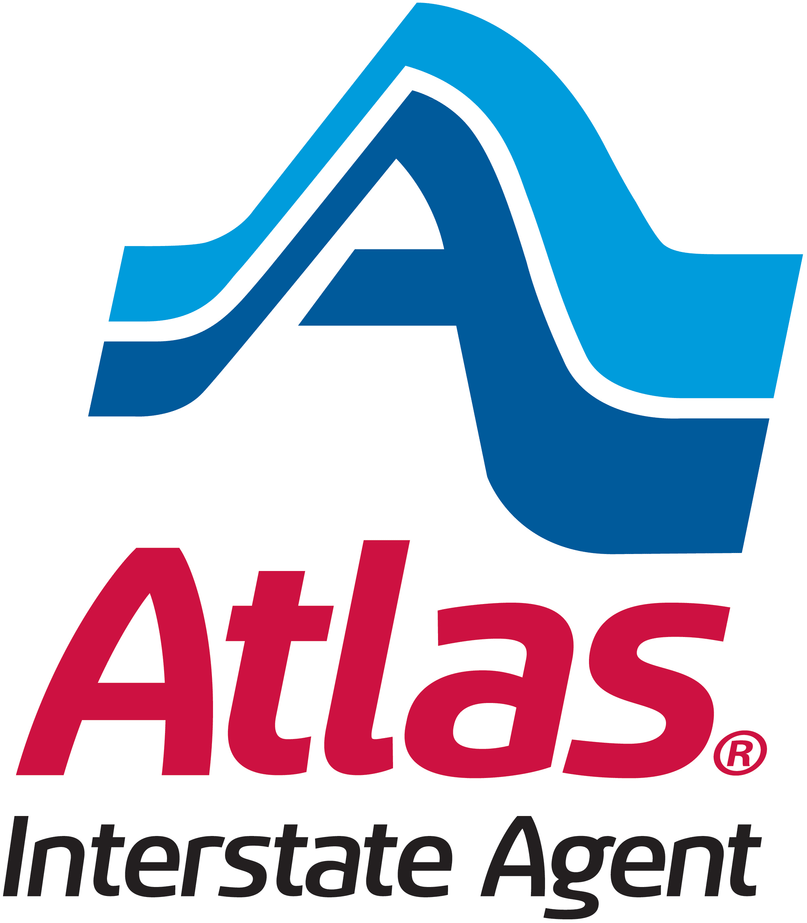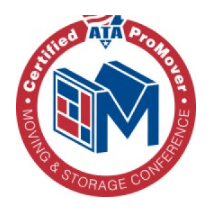How Much Do Moving Companies Charge for Storage? Rates Explained

ListStorage costs can make or break your moving budget. A basic 5×5 storage unit might start at $40 monthly, while premium climate-controlled spaces often command $150 or more. These dramatic price variations reflect the complex dynamics of moving company storage solutions.
The reality is that storage pricing involves multiple factors that directly impact your wallet. Unit sizes range from compact spaces perfect for apartment contents to warehouse-sized solutions for entire homes.
Duration options span from short-term transition periods to long-term preservation needs. Premium features like climate control and 24/7 access add another layer to the pricing equation.
Moving companies have transformed storage services into an all-encompassing approach that goes beyond simple space rental. Their integrated approach combines secure storage with professional handling, specialized packing services, and flexible access options. This evolution means more choices – and more opportunities to optimize your storage investment.
Understanding these nuanced pricing structures puts you in control of your storage decisions. From seasonal rate fluctuations to bundle discounts, knowing the full spectrum of costs and available options ensures you’ll find a solution that protects both your belongings and your budget.
Let’s explore the real costs of moving company storage services and uncover strategies to secure the best possible rates.
Storage Cost Factors In Moving Companies
Understanding storage costs doesn’t have to be complicated. When considering the average costs for moving services, two key elements determine what you’ll pay: storage unit size and duration. Let’s explore the real costs and practical options available for your storage needs.
Size-Based Pricing Structure
Your choice of storage unit size directly impacts monthly costs. Here’s a practical breakdown of what to expect:
Small Unit Costs (5×5 to 5×10)
Perfect for studio apartment contents or seasonal items, small storage units typically run $40-$50 monthly. Picture this space holding about 50 medium-sized boxes or a combination of boxes and small furniture pieces like a twin mattress, chair, and several storage containers.
Medium Unit Costs (10×10 to 10×15)
These popular units accommodate furnishings from a one to two-bedroom home, with monthly rates between $75-$150. You’ll have room for larger items like a queen-sized bed, dining room set, and major appliances, plus dozens of boxes – essentially, the contents of a 1,200-square-foot home.
Large Unit Costs (10×20 and Above)
Starting at $100 monthly for standard storage and reaching $150+ for climate-controlled options, large units offer substantial space. These units easily house three to four bedrooms worth of belongings, including multiple large furniture pieces, appliances, and up to 100+ boxes.
Storage Duration Impact
Smart planning around storage duration can lead to significant savings. Understanding the costs of local moves can help you better plan your storage needs. Here’s what you need to know about timing and costs:
Short-Term Storage Rates
Many national moving companies include 30 days of free storage with long-distance moves – a detail worth exploring when comparing services. Whether you’re calculating the cost to move across town or planning extended storage, standard monthly rates kick in based on your unit size after any complimentary period ends.
Long-Term Storage Options
Extended storage commitments often unlock better pricing structures. When factoring in the cost of moving across the country, most moving companies reward longer commitments with reduced rates and additional perks like free access hours or enhanced security features.
Monthly vs. Annual Pricing Models
While month-to-month plans offer flexibility, annual contracts typically save 10-15% on overall costs. Consider these factors:
- Monthly payments provide maximum flexibility
- Annual contracts often include price-lock guarantees
- Seasonal timing affects rates (summer typically costs more)
- Location impacts pricing (urban areas generally cost more than suburban locations)
- Climate-controlled options add 20-30% to base rates
Types of Storage Services and Their Costs
Moving companies offer a range of storage solutions that fit diverse needs and budgets. Understanding the different types of moving services can help you make an informed choice for your belongings.
Standard Storage Solutions
When choosing between various types of moving companies, you’ll find they offer different storage options. Standard storage units come equipped with solid concrete floors, reinforced walls, and essential security features including individual locks and 24/7 facility surveillance.
While they don’t include climate control, they’re ideal for storing everyday items like sturdy furniture, moving boxes, and general household goods that can handle normal temperature variations.
Average Monthly Rates
Standard storage units stand out as the budget-friendly choice in the storage world. Small units (5×5 or 5×10) typically start at $40-$50 per month – perfect for storing the contents of a small apartment or seasonal items. Medium-sized units (10×10) range from $75-$100 monthly, offering enough space to store furniture and boxes from a typical two-bedroom home.
Climate-Controlled Storage
Temperature-Regulated Units
Climate-controlled storage maintains a steady temperature sweet spot between 55-85 degrees Fahrenheit year-round. Picture it as a temperature-regulated sanctuary for your most valuable possessions. These units prove essential for protecting fine wooden furniture, delicate electronics, and cherished family heirlooms from the damaging effects of temperature swings.
Humidity Control Benefits
The real magic of climate-controlled units lies in their humidity management. By maintaining optimal moisture levels, these units create the perfect environment for preserving sensitive items.
Your antique furniture, important documents, treasured photographs, and musical instruments stay protected from warping, mold, and mildew – especially crucial in areas where humidity runs high.
Premium Pricing Structure
Climate-controlled storage represents a premium service with corresponding rates. Plan for prices running 25-35% higher than standard storage, with larger units typically costing $100-$150 monthly. While this represents a bigger investment, consider it insurance for protecting irreplaceable items from environmental damage.
Portable Storage Options
Container Delivery Fees
Portable storage brings the storage unit right to your doorstep. Initial delivery fees typically range $50-$100, based on your location and container size. Many companies sweeten the deal by waiving delivery fees for thorough moving packages or extended rentals.
Monthly Rental Charges
Monthly rates for portable containers start at $150-$200 for standard sizes (typically 8x8x12 or similar dimensions). These units offer unmatched convenience – imagine having a secure storage space right in your driveway, allowing you to pack and unpack at your own pace without rushed deadlines.
Transportation Costs
When comparing the costs of renting a moving truck to portable storage options, consider that moving your portable unit comes with additional fees based on distance traveled.
Local moves within the same city typically run $100-$200. For long-distance transportation, costs can range from $500 to several thousand dollars, depending on the journey length and service level chosen. The final price reflects factors like fuel costs, distance, and handling requirements.
Additional Fees and Charges
Planning your storage budget? Let’s break down the real costs beyond just the monthly rental rate. Here’s a practical guide to help you understand exactly what you might need to factor in.
Initial Setup Costs
Administrative Fees
Starting a storage rental involves some essential paperwork and processing. Most facilities charge $15-$50 for administrative setup – think of it as your storage unit’s paperwork processing fee. While these one-time charges are standard practice, keep an eye out for seasonal promotions when these fees might be waived.
Security Deposits
Just like renting an apartment, storage facilities typically ask for a security deposit equal to one month’s rent. The good news? Keep your unit in great shape, and you’ll get every penny back when you move out. Remember that larger units or premium storage spaces might require a higher deposit to secure your spot.
Insurance Requirements
Storage insurance is a must-have safeguard for your belongings. While your homeowner’s policy might offer coverage, most facilities require dedicated storage insurance. Monthly premiums typically run $10-$30, scaling with the value of your stored items. Think of it as an investment in peace of mind for your valuable possessions.
Handling and Labor Fees
Loading/Unloading Charges
Professional handling makes all the difference in protecting your items. Understanding the cost of hiring moving services is essential, with a skilled two-person team typically costing $50-$100 per hour.
At Nelson Westerberg, our experienced crews combine efficiency with careful handling – treating your belongings as if they were their own. Many clients also ask about the amount to tip movers for excellent service—a cost that you should definitely also include in your budget.
Packing Service Costs
Professional packing expertise runs $30-$60 per hour per packer, including quality materials and proven techniques for long-term protection. While this might seem like an extra expense, proper packing can prevent costly damage and ensure your items emerge from storage in the same condition they went in.
Special Item Handling
Got a piano, safe, or precious artwork? While some movers can move unboxed belongings, these special items need extra care and specialized equipment. Special handling fees range from $100-$300, reflecting the additional expertise and equipment required. This investment ensures your valuable pieces receive the precise care and attention they deserve.
Access and Security Fees
24/7 Access Charges
Standard business hours access comes included, but round-the-clock availability might cost extra. For $10-$25 monthly, you’ll gain the flexibility to access your belongings any time – perfect for those unexpected storage needs or irregular schedules.
Security Monitoring Costs
Enhanced security features like individual unit alarms, video surveillance, or biometric access typically add $5-$15 to monthly costs. These advanced protection measures create multiple layers of security, helping ensure your stored items remain safe and sound.
Cost-Saving Strategies
Looking to trim your storage expenses without compromising quality? When you plan your move, let’s delve into proven strategies that can help you secure the best value for your storage investment.
Seasonal Price Variations
Peak vs. Off-Peak Rates
Summer months (May through September) bring a significant surge in storage costs, with prices jumping 20-30% above standard rates. Here’s the silver lining: winter storage, particularly in January and February, offers remarkable savings opportunities – we’re talking 15-25% off regular rates.
Best Time to Book
Smart timing makes all the difference in storage costs. Securing your unit 30-60 days ahead, especially during quieter seasons, typically locks in better rates. Based on our experience at Nelson Westerberg, mid-month bookings often reveal better unit availability and more attractive pricing compared to end-of-month rushes.
Negotiation Tips
Bundle Service Discounts
Want to unlock substantial savings? Consider bundling services. Combining storage with professional moving services often yields 10-20% off your total bill. The real gem? Many facilities offer a complimentary first month of storage when you book a full-service move.
Long-Term Contract Benefits
Longer commitments often translate to bigger savings:
- 6-month contracts typically reduce rates by 10-15%
- Annual agreements can save you 20-25% on standard rates
Just remember to map out your storage timeline carefully to maximize these discounts.
Compare and Contract
Getting Multiple Quotes
Gather at least three quotes to get a clear market picture. Take time to calculate your moving costs and compare options. While base prices might look similar, crucial differences often hide in the details:
- Security features and monitoring
- Access hours and convenience
- Climate control capabilities
- Customer service quality
Reading Fine Print
A careful review of your storage contract helps avoid surprise costs. Essential elements to examine include:
- Required notice periods for unit vacation
- Conditions for rate adjustments
- Facility access guidelines
- Insurance coverage requirements and options
Price Match Policies
Leading storage providers, including Nelson Westerberg, actively monitor market rates to stay competitive. Found a better deal? Bring it forward – many facilities will match or even beat verified competitor pricing to earn your business.
The real value in storage often extends beyond the basic monthly rate. Professional facilities offering robust security, climate control, and experienced staff typically deliver superior protection for your belongings. While initial rates might be higher, the peace of mind and property protection often prove more economical over time.
Frequently Asked Questions
- How long can I store my items with a moving company?
Storage duration flexibility is one of the key benefits of working with professional movers. Whether you need a temporary solution for 30 days or a long-term arrangement spanning several years, we’ve got you covered.
Here at Nelson Westerberg, our climate-controlled facilities accommodate both short-term transitions and extended storage needs. Here’s a helpful detail: many long-distance moves include 30 days of complimentary storage, after which standard monthly rates take effect.
- Are there items that cannot be stored in moving company facilities?
Safety and legal requirements mean certain items can’t make their way into storage facilities. The basics? No hazardous materials, flammables, perishables, live plants, or illegal substances.
Think paint thinners, propane tanks, fresh food, or houseplants. As for valuables like cash, crucial documents, and jewelry – those should stay with you for safekeeping. Pro tip: Always grab a complete restricted items list from your storage provider before packing day arrives.
- Do I need additional insurance for stored items?
Let’s talk about protection for your belongings. While basic liability coverage comes standard (typically around $0.60 per pound per item), it’s often not enough for valuable possessions.
Picture this: a 50-pound TV worth $1,000 would only be covered for $30 under basic coverage. That’s why we recommend considering full-value protection or supplemental storage insurance, especially for high-value items or long-term storage situations. Think of it as an extra layer of peace of mind.
- Can I access my belongings while they’re in storage?
Getting to your stored items varies by facility, but here’s what you need to know: Most professional storage facilities, including Nelson Westerberg, provide access during regular business hours with advance notice.
Some locations offer 24/7 access for an additional fee. The key is understanding the specific access policy before you commit – whether it’s walk-in hours or scheduled appointments, knowing the rules helps avoid any access hiccups down the road.
- What happens if I need to extend my storage duration?
Need more time? No problem. Storage extensions typically work on a month-to-month basis after your initial contract ends. The process is straightforward: just give notice before your current term expires (typically 5-7 days ahead) to lock in continued storage.
One thing to keep in mind: rates might adjust during extensions, so it’s worth checking the updated pricing when you extend. Most facilities make this process hassle-free, understanding that storage needs often transform over time.
Conclusion
Storage costs with professional moving companies can vary dramatically – from $40 monthly for a basic 5×5 unit to $150+ for premium climate-controlled spaces. Here’s what experienced movers know: finding the right balance between cost and features makes all the difference in protecting your belongings.
Let’s break down what impacts your storage costs:
- Security Features: 24/7 monitoring, controlled access
- Climate Control: Essential for sensitive items like electronics and furniture
- Accessibility: Regular business hours vs. extended access
- Location: Urban facilities typically cost more than suburban options
- Duration: Many facilities offer better rates for longer commitments
Here’s a money-saving tip: Look beyond the base rate. While a $50/month unit might seem attractive, factor in additional costs like:
- Insurance coverage
- Handling fees for item pickup/delivery
- Administrative charges
- Access fees (if applicable)
- Climate control premiums
Smart storage decisions start with asking specific questions about your needs:
- How often will you need to access your items?
- What types of belongings are you storing?
- How long do you anticipate needing storage?
- Does your location experience extreme temperatures?
Many moving companies offer package deals combining storage with moving services – potentially saving 10-15% compared to booking separately. At Nelson Westerberg, we’ve found that clients who take the time to evaluate these factors typically find solutions that better match their needs and budget.
Ready to explore your storage options? Professional moving companies can provide detailed quotes based on your specific requirements, helping you make an informed decision that protects both your possessions and your wallet.
Related Articles
Where to Move from Texas: Top 10 States for Ex-Texans in 2025

Where to Move from Texas: Top 10 States for Ex-Texans in 2025 Record numbers of Texans are exploring life beyond state lines, driven by soaring housing costs, evolving career landscapes, and the search for new lifestyle opportunities. The decision to leave Texas stirs intense emotions – after all, the Lone Star State‘s unique culture and […]
Read MoreHow to Move a House from One Location to Another: Planning to Completion

Relocating an entire house might seem like something out of a movie, but this remarkable feat of engineering happens more often than you’d think. From preserving historic mansions to saving beloved family homes from coastal erosion, house moving represents the intersection of cutting-edge engineering and practical problem-solving. With project costs typically ranging from $18,000 to […]
Read More




